For most people, their earliest recollection of chalk drawings was at school. That white piece of stick the teachers used to write on the blackboard. And for some of us, school was the last place we saw chalk.
If you didn’t know any better, you’d think the powdery white substance was restricted to the classroom.
But for creatives, it makes a decorative art form, and you’ll be amazed at the multitude of colors chalk comes in and how versatile it is.
If you’ve developed an interest in chalk art, this guide will tell you everything you need to know.
What Is Chalk Art?
Chalk art has been around since the 16th century. History tells us that it started in Italy, and street artists made a living drawing pictures of Madonna.

Artists covered the pavements in her portraits, and this art form became known as ‘Madonnari.’ Chalk art also made its mark in London in the 1800s.
Artists called screevers used chalk to draw religious messages. Famous artists such as Leonardo da Vinci and Michelangelo used white and red chalk to produce many of their famous works.
Tools and Supplies You Need For Chalk Art
You will need several tools and supplies to get started with chalk art. These include chalk, a work surface, and a ruler/measuring tape.
Keep reading to find out exactly what you’ll need to start chalk art.
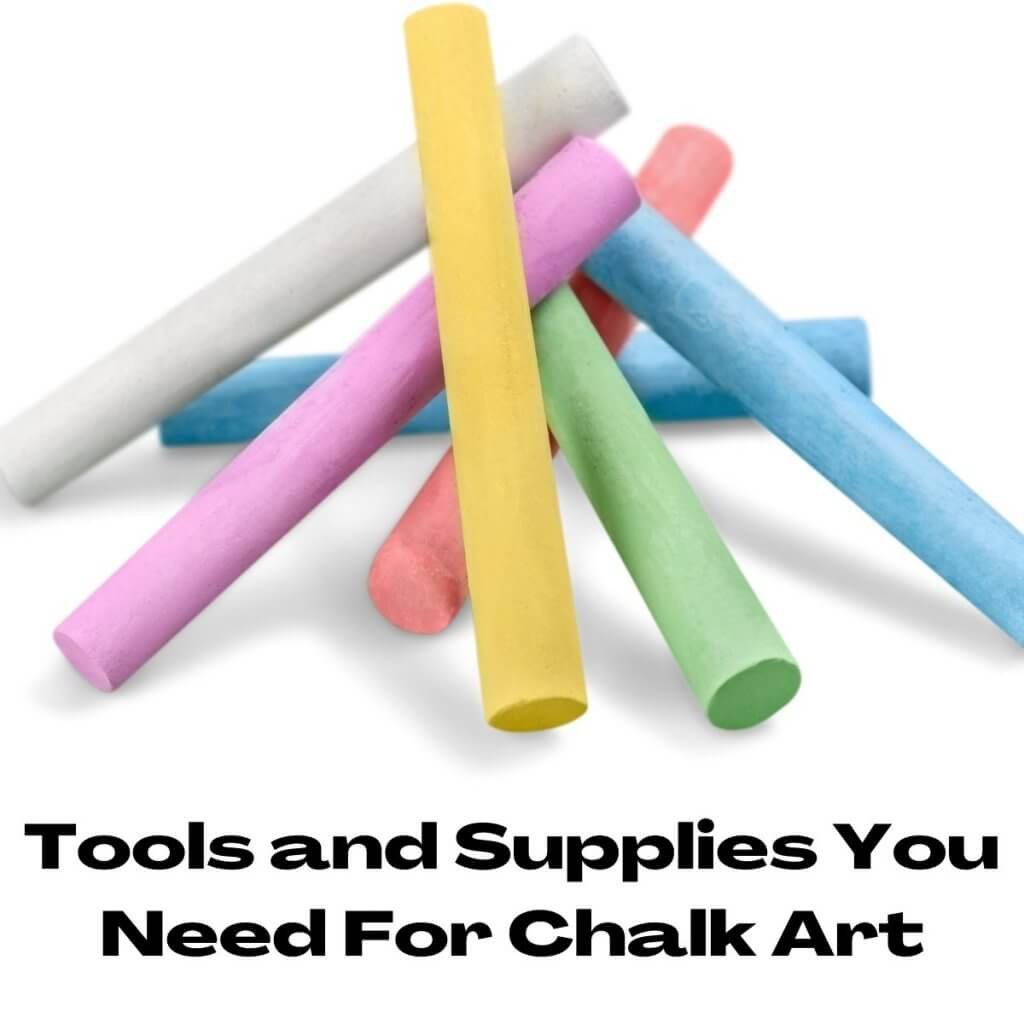
Chalk
Chalk is the main ingredient because that’s what you’ll need to create your artwork.
A Work Surface
Apart from a blackboard or a chalkboard, you can also use concrete cement, cardboard, linen, clothes, wood, or dry paper as a work surface.
Ruler/Measuring Tape
To draw straight lines on a small area, you’ll need a ruler, but for larger areas, you’ll need a measuring tape.
Container
You will need a solid container to store your chalk. A wooden container works better than a cardboard box as they are not as pliable. Remember, chalk snaps easily so that a wooden box will protect them better.
Tape
Tape isn’t a necessity, but if you want to create a border for your drawing, it will come in handy.
Cleaning Supplies
One of the benefits of chalk art is how easy it is to correct mistakes. For example, if you draw a line incorrectly or use the wrong color, baby wipes or any other type of wet wipes will help rectify the mistake.
You can also use them to wipe the chalk off your hands once you’ve finished your work.
Blending Materials
Do you remember how your teacher would use her fingers to correct mistakes on the chalkboard? That’s because chalk is very easy to blend. If you’re on a tight budget, there’s no harm in using your fingers.
Just ensure you wash your hands properly because if you have grease on your fingertips, it’ll leave an unsightly fingerprint that will ruin your work.
If you can afford it, I would advise that you invest in some blending materials specifically designed for blending chalk.
These include chalkboard erasers and foam sheets. You can also use a toothbrush, a cotton bud, and a blending stick for the finer details.
Existing Artwork
If you can’t find any pictures to draw, copy existing artwork. A google search will help you find what you need. You can then print out the pictures and use them as inspiration.
Don’t feel bad about copying someone else’s work. As long as you’re not trying to make out that it’s yours, you’ll have nothing to worry about.
With a bit of practice, you’ll soon start making originals.
How To Select The Right Chalk?
In the same way artists use different paint brushes and types of paint for their work, chalk is no different.
You can use various chalks, including slim chalk, thick chalk, and chalk pastels. Keep reading to find out how to select the right chalk.
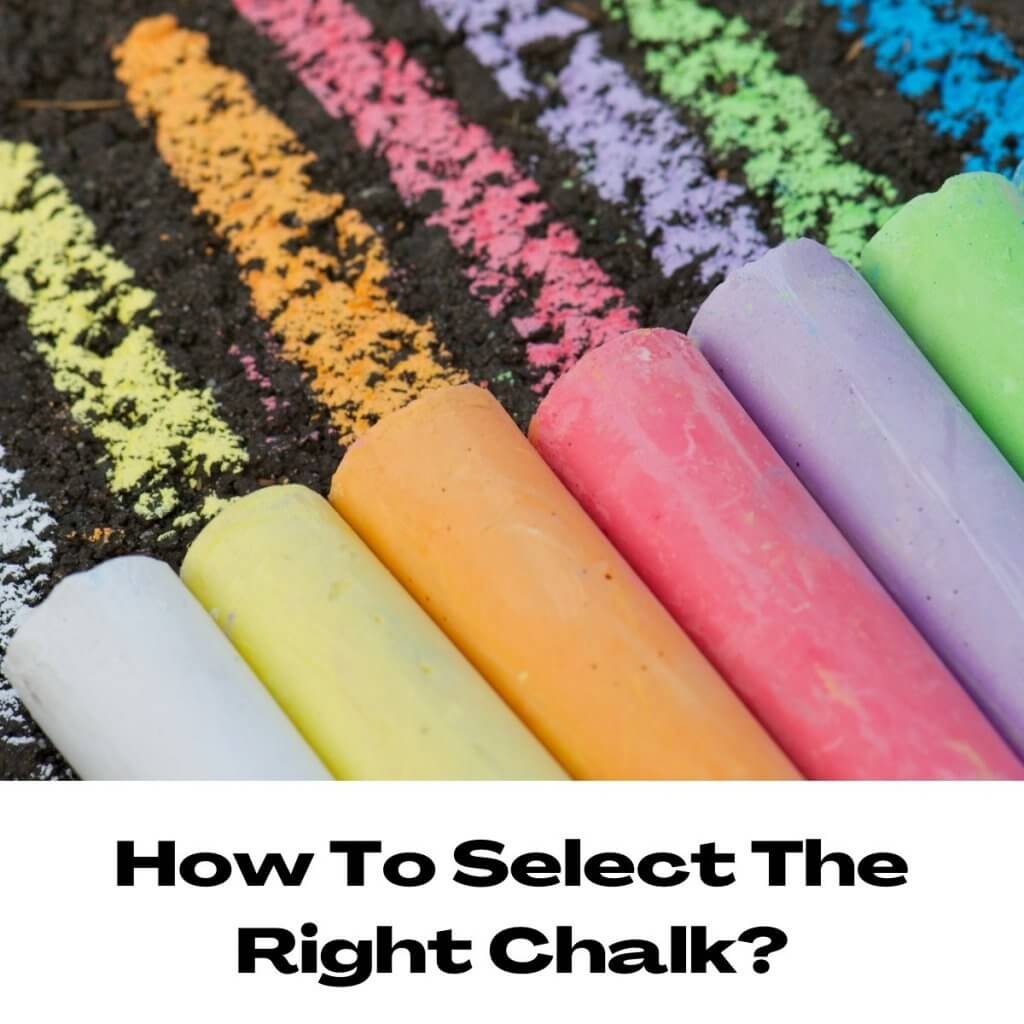
Slim Chalk
Slim chalk works well when you want to add detail and highlights to your drawing.
Thick Chalk
Some artists prefer thick chalk because it lasts longer and doesn’t break as easily as thin chalk.
Chalk Pastels
use chalk pastels to add fine details and shading to your artwork.
Chalk Pencils
A chalk pencil works well when drawing on paper because it creates smudge-free and crisp lines.
Chalk Marker
You can use a chalk marker like a pen. The ink flows freely onto the canvas or board.
Chalk Brands
Additionally, some artists prefer to use a particular chalk brand. You’ll need to try them out for yourself to determine what works best for you.
Some chalk brands you might want to try include:
Chalk Art Techniques For Beginners
The techniques you use for your drawings will help add depth and character to your work.
Chalk art techniques for beginners include chalk art templates, chalk art layering, and chalk art blending.
Keep reading to find out about chalk art techniques for beginners.
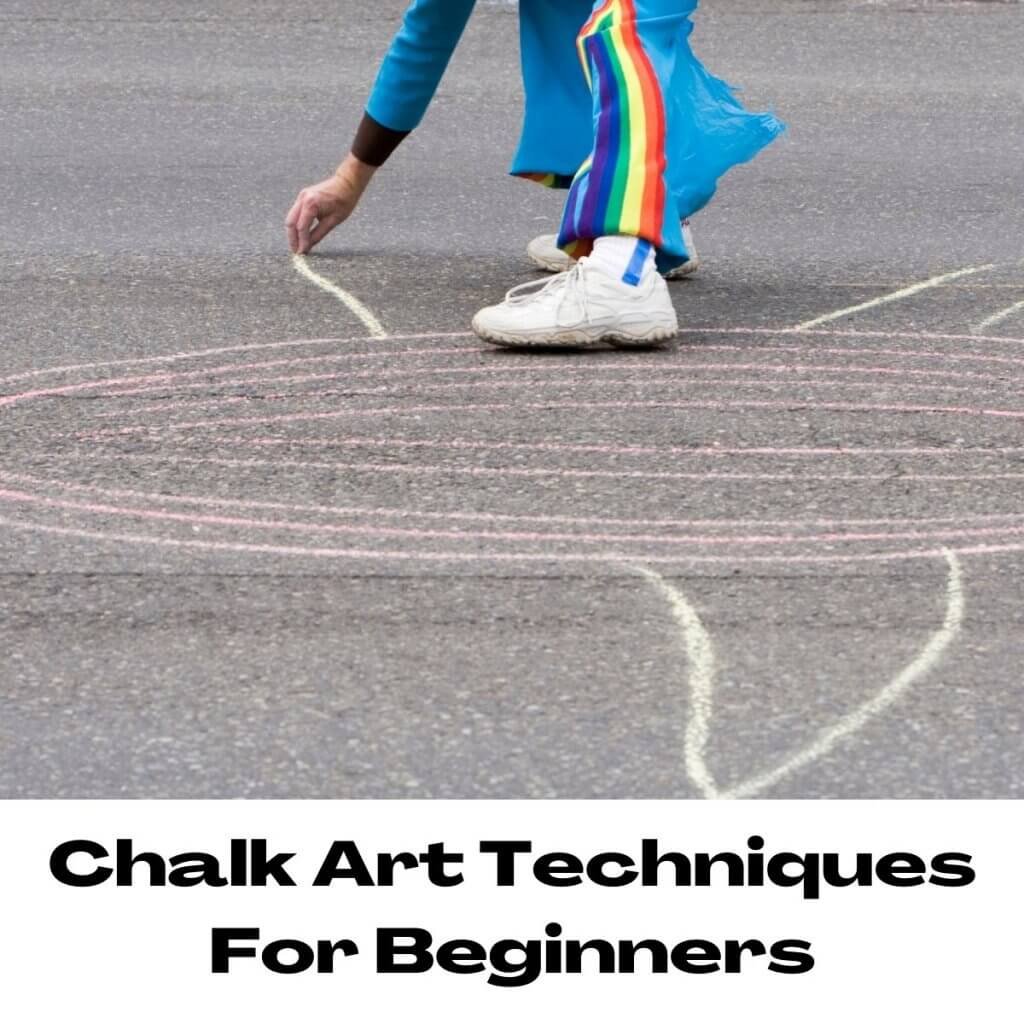
Chalk Art Templates
As a beginner, if you really want to add some spice to your work, use a template. You will find templates in any arts and crafts store.
Use painter’s tape to tape the template down to your surface, and use chalk to draw the design. You can then color and blend the picture as you desire.
Chalk Art Layering
Layering is typically used to show different shades when drawing things like flowers, grass, water, or the sky.
However, you can use it in any way you desire for your artwork. Layering is a fun and versatile technique to use.
Choose two or three colors, don’t stand the chalk up like a pencil, lay it on its side, and drag the chalk down the surface. Repeat with the second color and then again with a third color.
Chalk Art Blending
You can blend colors to create a specific look for your picture. The technique is simple and involves using your fingers. (make sure they’re clean)
Or a blending tool to blend the different colors on your picture. Blending is also used to make shades or shadows.
Using The Flat Side
Chalk is shaped like a pencil, so you’ll almost feel obliged to use the sharp edge to draw.
However, if you want a more textured and open grain look, use the side of the chalk.
It also allows you to fill in large spaces quickly. If you want a rough look, leave it as it is, or blend it for a smoother look.
Mixed Media
You can mix chalk with different art media, such as a watercolor wash, or you can combine hard with soft chalk for additional definition and detail.
Using collage also makes an interesting texture. However, mixing chalk with oil paint is not a good idea.
Masking
Chalk creates very soft pictures that are easy to blend. However, if you want to create a strong line with a more refined edge, you’ll need to use a separate sheet of paper to cover the part you want to shield.
This might be an area with a different color, or you might want to keep the same color on the paper.
After covering the area, continue drawing and once you’ve completed the picture, remove the paper. You’ll notice that the edge of the paper has formed a hard line.
Scumbling
Scumbling isn’t the easiest technique to use, but it’s simple enough for beginners.
Scumbling is a form of layering, but it involves fixing the first layer, which is achieved using a professional art fixture or hairspray.
Once the first layer is fixed, you can layer soft shades or lines over the top. The fixed layer provides a different texture from the other layers, creating a unique finished look for your artwork.
Learning To Draw With Chalk
Once you’ve got the basics down pat, you can use your imagination and draw what you like. Here are the steps you’ll need to take to get started:
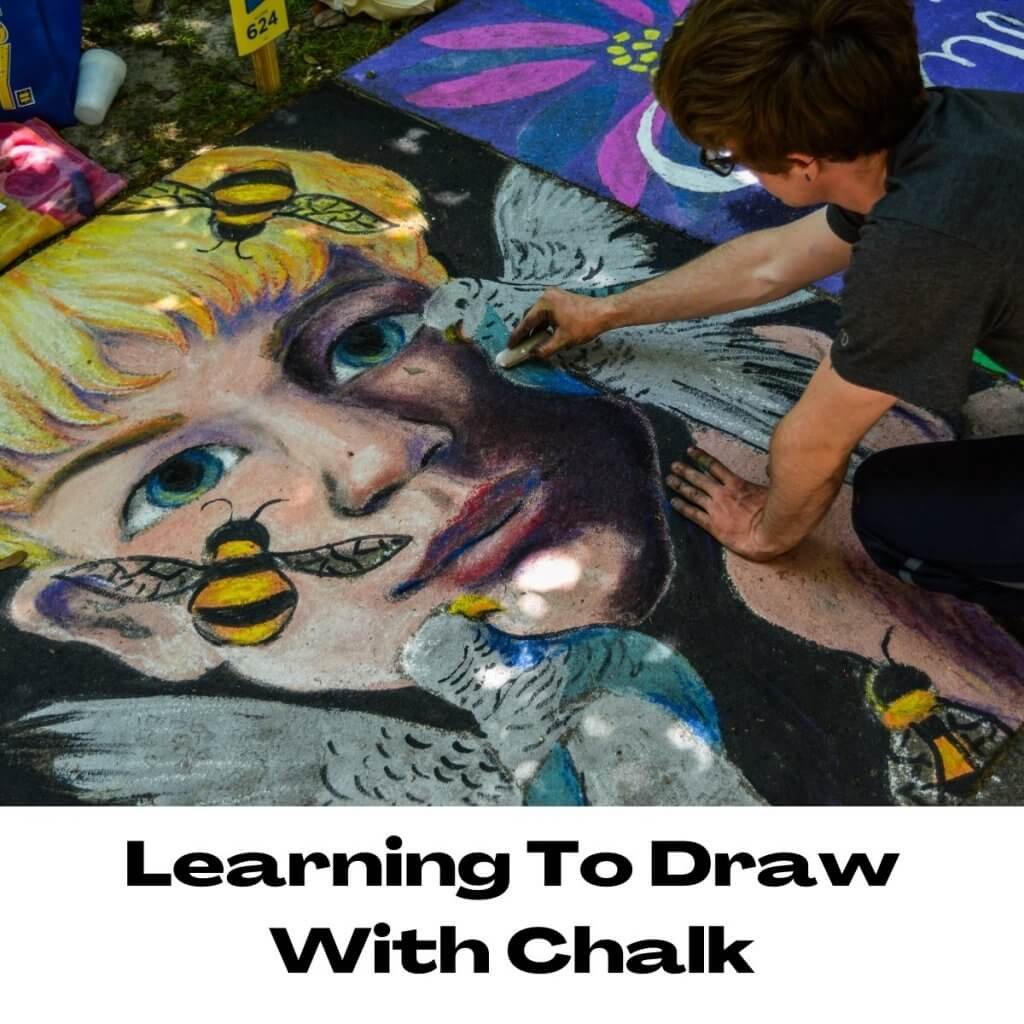
Step 1
Use a wet rag to clean the board or surface you’ll use. If you’re using a chalkboard that’s been used before, make sure you wipe the board several times to ensure all the residue has been removed.
Step 2
Find the middle of the board by measuring the width and height with the tape measure. For guidance, draw a light line down the middle. At the end, you can rub it out using a Q-Tip.
Step 3
If you plan on using a border, now is the time to create one. You can use tape to do this.
Step 4
You can now start sketching your image onto the surface.
Step 5
If you want to transfer a drawing onto a chalkboard:
- Rub chalk all over the back of a sheet of paper.
- Turn the paper over, position it onto the chalkboard and use tape to secure it down.
- Use a pencil with a soft tip to draw over the image.
The chalk on the paper gets transferred onto the chalkboard with the pencil’s pressure. Draw the rest of the design.
Step 6
Finally, add the color of your choice, blend and use whatever techniques are necessary for your project.
Step 7
If you make any mistakes, use a Q-Tip or wet-rag to make corrections.
Step 8
After practicing, you might want to start sealing your pictures onto the chalkboard so that it doesn’t smudge. Sealing is particularly helpful when giving the picture to a loved one as a gift. The easiest way to seal a picture is to spray a layer of hairspray over the top. Don’t overdo it. One thin layer will work just fine.
5 Tips and Tricks For Chalk Art
Although chalk art is one of the easiest drawing skills to learn, some tips and tricks will make the process a lot easier.
These include seasoning the chalk board, wetting the chalk, and keeping it simple. Keep reading to find out some tips and tricks for chalk art.
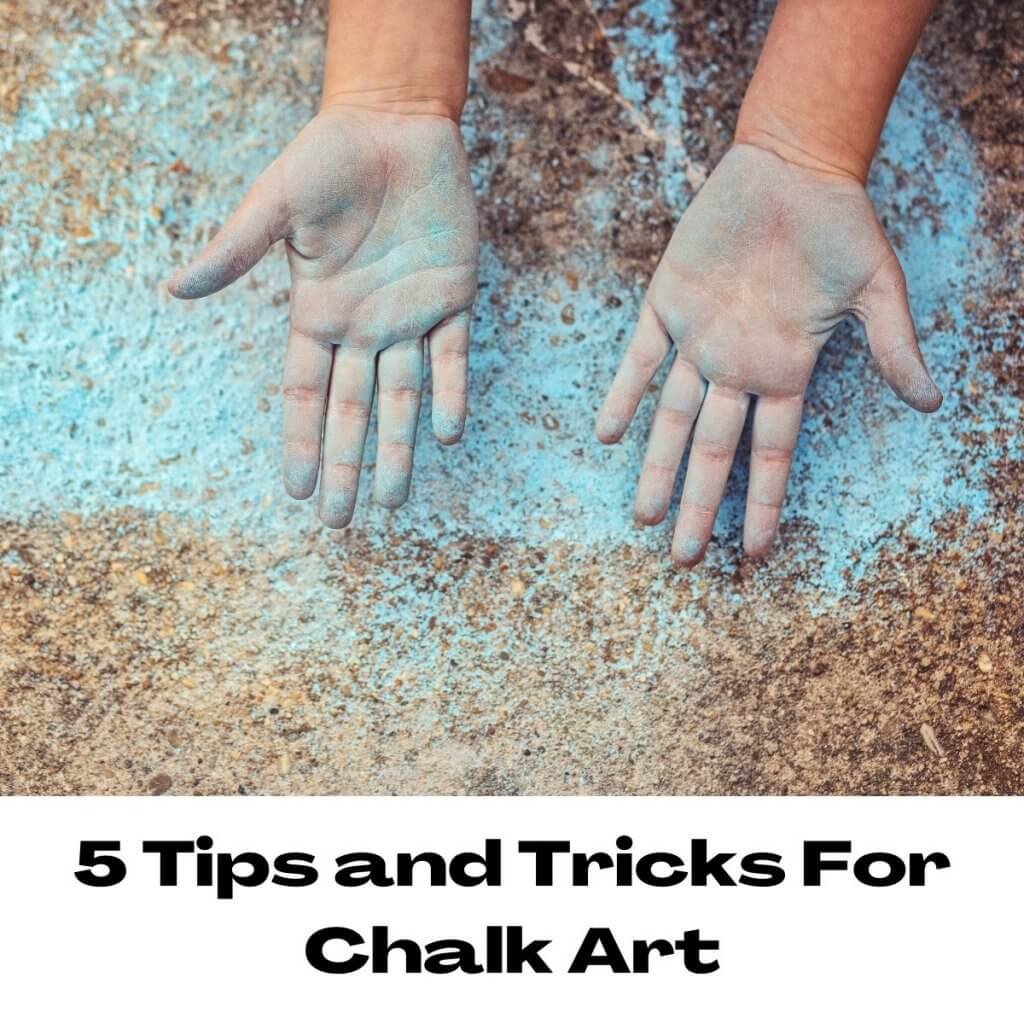
#1 Season The Chalk Board
It can be tempting to start drawing on your brand-new chalkboard immediately, but this is not advised. Brand new boards are susceptible to ghosting.
This is when you can still see faint lines after erasing a picture. To avoid this, you’ll need to season the chalkboard, and you can do this by rubbing the flat side of the chalk all over the chalkboard.
First, rub the chalk thoroughly over the entire board, ensuring there are no black spaces. Once done, use a wet rag to rub off all the chalk.
#2 Wet The Chalk
When drawing with chalk, make sure it’s moist. You can do this by dipping it into water.
Keep dipping the chalk into the water as you draw. Once you start drawing, you’ll notice that the chalk lines are faint, but once its dry, the original bright color will return.
If you don’t want to wet the chalk, you can wet the board by going over it with a wet rag before you start drawing.
#3 Keep It Simple
Unless you’re a really confident artist, start with simple designs. Drawing simple designs will get you used to chalk art before graduating to the more elaborate designs.
#4 Use a Pencil Sharpener
You will need to keep the tip of the chalk sharp while drawing. Use a pencil sharpener, but be gentle with it, or the chalk will break.
#5 Adding Wet Chalk
When the white chalk has dried, and you add colored wet chalk over the top, it will seem like the white chalk has been ruined. Wait until the chalk dries, and it will return to its original color.
Chalk Art Tutorial
If you are looking for some step-by-step instructions that you can follow along with, here are some chalk art video tutorials.
How To Draw 3D Chalk Art
3D chalk art isn’t for the novices. If you’re not an artist and you’ve just chosen chalk art as a hobby, 3D chalk art might not be for you because it’s quite complex.
But don’t let being a novice stop you. You can give it a try if you want. Nevertheless, it’s a really cool way to use chalk.
How To Draw An Elephant
Drawing an elephant might seem simple, especially because you can just copy a picture off the internet. But there’s a much easier way to draw an elephant, and you’ll find it in this video.
How To Draw a Hummingbird
The hummingbird symbolizes joy and happiness, and its presence brings positive energy and good luck into our lives. This tutorial will show you exactly how to draw one.
14 Easy Chalk Art Ideas
Now that you know about chalk art, it’s time to start. A few ideas include a superhero, magic bubbles, and drawing yourself. Here are fourteen chalk art ideas to get your creative juices flowing:
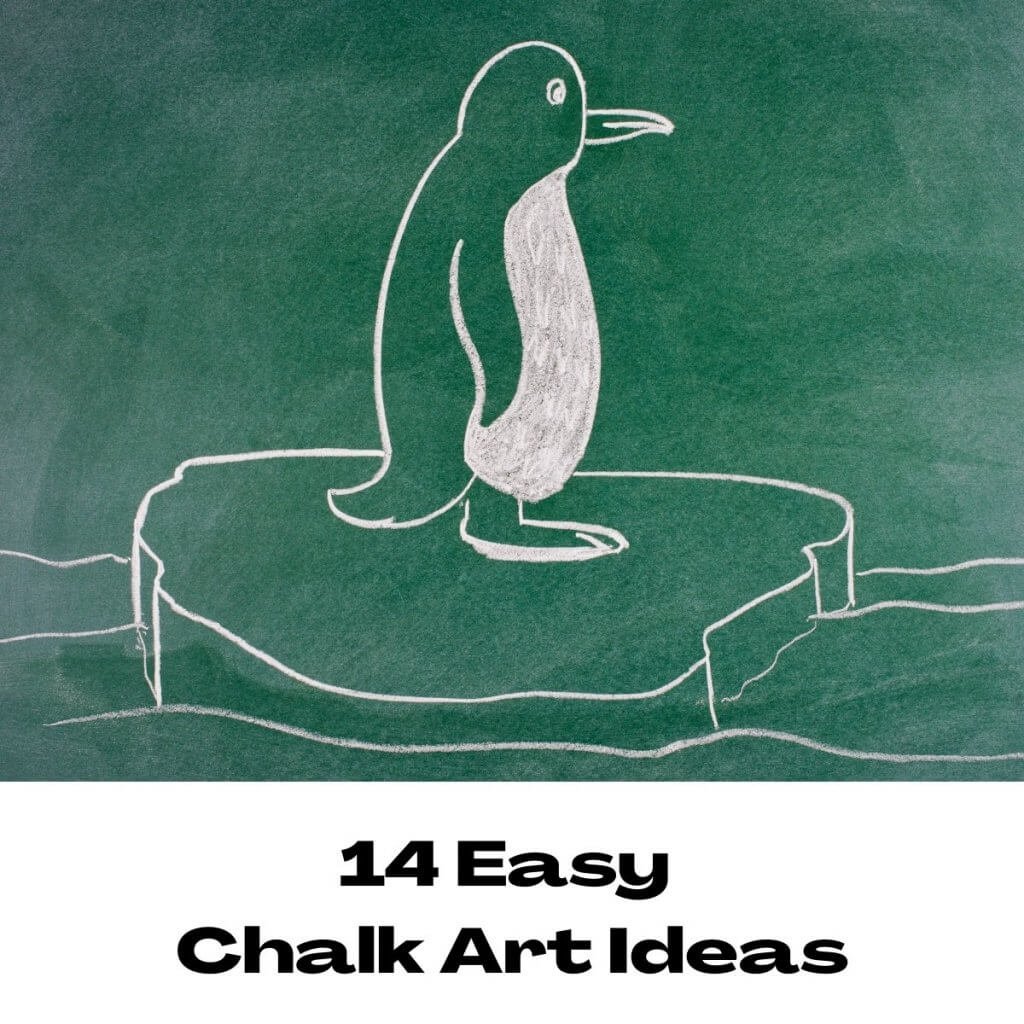
#1 Superhero
Draw the superhero cape of your choice onto the concrete. Have your child lie on the floor with their arms stretched out in front of them underneath the cloak, so it looks like the cape is flowing from his/her back. You can capture the moment by taking a picture.
#2 Magic Bubbles
You can make very realistic-looking bubbles using chalk. When done properly, they literally look as if they’re floating in the sky.
#3 Draw Yourself
No one knows what we look like better than ourselves. Instead of taking a selfie, draw a picture of yourself. It can be as detailed or as cartoonish as you want it to be.
#4 Photoshoot Background
Whoever you plan on photographing, create an interesting backdrop using chalk. The photoshoot might be for your sister, brother, mother, cat, or dog, whoever it’s for, taylor the background to match their personality.
#5 Hopscotch
Hopscotch is a classic game that most people played in their childhood. It involves drawing large squares on the floor from one to ten.
The squares need to be big enough so players can put their feet in them. You will need a rock, and each player takes it in turns to throw the rock into one of the squares.
Whatever number the rock lands on, that person has to hop to the end of the board without jumping on the one with the stone in it.
#6 Disney Characters
While you can draw any cartoon characters you want, Disney characters are the most popular. These include Mickey Mouse, Rapunzel, Ariel, Snow White, Donald Duck, Minnie Mouse, Cinderella, Goofy, and Pluto.
As you know, there are loads more. A quick Google search will pull them all up.
#7 Draw Animals
What are your favorite animals? Are they the cute and fluffy kinds like kittens, puppies, and rabbits? Or maybe you like the more ferocious and dangerous animals like alligators, snakes, or sharks. Whatever animal you prefer, have fun creating with chalk.
#8 Beanstalk
Do you remember the English fairy-tale Jack and the Beanstalk? Well, how about drawing a large green beanstalk in your backyard for the kids.
The beanstalk size will depend on your backyard dimensions, but the bigger, the better.
Your children can spend their playtime pretending as if they’re climbing up the beanstalk.
#9 Seaside Town
If you can’t go to the seaside, bring the seaside to you by drawing a seaside town.
You can either draw it in your backyard or on several chalkboards and line them up against a wall in your house.
You can draw the sea, sand, and sky and make the sea come to life by drawing sea animals such as jellyfish and starfish.
You can take it further by buying a couple of beach balls. The kids can pretend to play with the sea and the sand.
#10 Water Art
Don’t count out rainy days just yet! If you ever plan on doing something like taking a trip to the park to kick a football around and it starts raining, so you cancel the outing, all is not lost.
Gather up your chalk supplies, go into the backyard and start drawing. Water makes the chalk colors come to life, so if you really want to have fun with this, draw bright pictures such as a rainbow, a sun, or brightly colored fish.
#11 Flowers
Flowers are great to draw with chalk art because they are so colorful. You can draw a bunch of roses, tulips, daffodils, and any other flower you’d like.
Flowers are easy to draw, and you can embellish them with leaves and stems.
#12 Holiday Theme
There are a variety of holidays throughout the year, including Christmas, Easter, Thanksgiving, and Halloween.
These holidays are themed, so you’ll have something to draw with each one. You can draw a tree, a snowman, or Santa for Christmas.
A pumpkin, a witch, a scarecrow for Halloween, a turkey, or a Native Indian for Thanksgiving.
#13 Food
Are you a foodie? Do you love eating pizzas, burgers, and French fries? You can draw them around a dinner table, on plates, or in mid-air. However you want to draw them is up to you. Maybe the next time you order a takeaway, you can draw it while you wait.
#14 Balloons
Balloons are fun and playful, and you can get as creative as you want to when drawing them.
You can draw balloons tied to a bicycle, a child’s arm, or on the side mirrors of a car. You can also draw a hot air balloon floating in the sky with a marvelous background like a sunset, hills, valleys, a deep blue sky, or mountains.
If you want to get really creative, you can draw people inside the hot air balloon looking over the basket at the magnificent view.
Final Thought
Now that you’ve gained more insight into chalk art, it’s time to start. Remember, you might not be that good at it, to begin with but practice makes perfect.
You’ve got enough to make plenty of chalk art drawings. If you feel like getting a bit more creative, you’ll find some advanced tutorials on YouTube.




